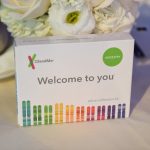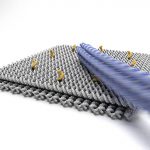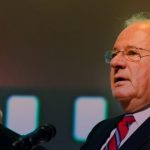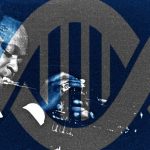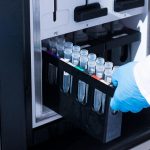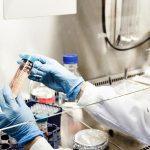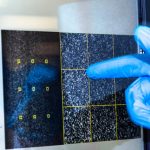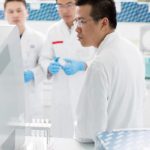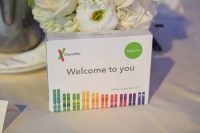The Quest To Identify Vietnam’s Unknown Soldiers Pushes The Limits of DNA Technology
Advanced sequencing technologies are the centerpiece of an ambitious project to identify 70,000 fallen soldiers by 2020.
Christina Farr July 20, 2016
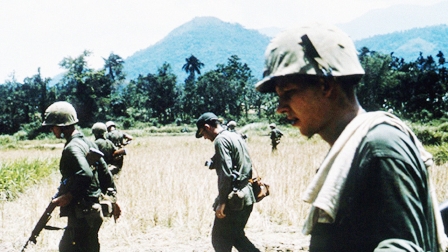
“In Vietnam, religious traditions hold that the ghosts of the dead cannot rest without a proper burial in a place appropriate to the family,” explains William Frasure, a professor of government at Connecticut College who has both lived and worked in the country. And yet, tombstones throughout the country still bear little else than the words “liet sy—chua diet ten,” which translates to “martyr—name unknown.”
The last unknown U.S. soldier from the Vietnam war was exhumed and identified, through DNA testing, in 1998. But in Vietnam, there are still upwards of 300,000 unidentified soldiers, and thousands more civilian victims who are still missing, buried in anonymous graves, rainforests, or fields. And scientists say that time is running out to identify these missing persons.
“It’s been 30 to 50 years post-war; the relatives of fallen soldiers are aging,” says Tran Thi Thanh Huyen of the Vietnam Academy of Science and Technology (VAST). “Therefore there’s an urgent need for this project to be conducted.”
The government in Hanoi is now investing 500 billion dong (US$25 million) into upgrading local DNA-testing facilities as part of Project 150, a collaboration between three institutions that aims to identify 70,000 fallen Vietnamese soldiers by 2020. The new facility is expected to open by the end of 2016.
If successful, this effort will showcase to the world how advanced sequencing techniques will expand the area of possibilities for the field of forensics. Next-generation sequencing, which replaces a 30-year-old technology called “Sanger Sequencing,” is making it possible for the scientists in Vietnam to utilize samples that are degraded, dirty, or low-input. “With next-generation, we have worked up our clue game,” jokes Dawn Barry, vice president at Illumina, the company that develops the sequencing machines. “Think of a lipstick stain on the edge of a glass.”
The scientists in Vietnam are also learning from smaller-scale projects to identify war dead that have rolled out in Iraq, Thailand, India, Cyprus, and the U.S., among other countries. In some cases, it’s about prosecuting responsible parties. But in Vietnam, the stated purpose is to reunite older remains with living family members. That’s challenging as many of the soldiers died young and childless, meaning that links will more likely need to be made to distant cousins or uncles rather than to direct offspring or parents, who may have already died.
The first step, then, is to establish a massive database of more than 1 million living citizens’ DNA, which includes saliva, hair, and blood. Those samples will provide a “reference database,” which will be used to find familial links to the dead through a matching algorithm. It takes about three to six reference samples to confirm an identity of one missing person.
As part of the outreach efforts, citizens will also be asked to come forward with any eye-witness reports that might shed light on the identities of the victims. As Dr. Tran points out, DNA is just one way to identify people: Personal belongings, historical evidence, death certificates, and interviews with family members are data are also vitally important.
Before they collect data from citizens, the academic institutions in Vietnam received months of training from a global network of companies and not-for-profit organizations. Among them is medical-diagnostics giant Bioglobe, which signed a contract to transfer technology to the project in late 2015, as well as the Sarajevo-based International Commission on Missing Persons (ICMP), which is best known for pioneering DNA-matching techniques in the wake of the Bosnian war, which provided key evidence for war crime tribunals.
Bioglobe, in partnership with European forensics company QIAGEN, will help the scientists develop a process for dealing with bone and teeth that might be contaminated with soil microbes, which makes it challenging to analyze what little DNA remains. That involves training in technology that can chemically break down their cells in bone samples, and wash away any contaminants.
“The components need to be compatible with each other to get the best results, says QIAGEN’s Christian Starke. “(Especially) as the DNA is in bad shape by now.” As Starke explains, DNA is influenced by many perimeters, including temperature and time. Neanderthal bones stored in a cave with a near-constant temperature will have almost no negative effect on the DNA. In Vietnam, the tropical conditions and high humidity promotes microbial growth and the DNA decays much faster.
Given the age and condition of the bones, tissue-based samples are no longer a viable option in Vietnam. ICMP has stepped up to guide the scientists in the exhumation phase so they avoid mixing up the bones of different individuals. The organization will also provide best practices on how to identify clues like gender. “We have gotten very good at getting DNA out of bone,” says ICMP’s Director of Forensic Sciences’ Thomas Parsons. “And in finding DNA targets that tells us about human identity.”
For bio-ethicists, some questions remain about how institutions in Vietnam will manage the vast store of health information that it will collect in the coming years.
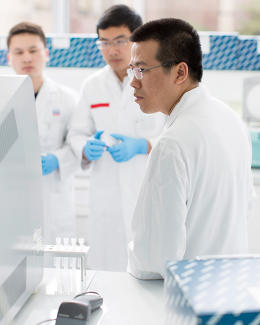
“Someone is going to have access to that data or you can’t make matches,” says Sara Katsanis, a researcher at Duke University’s department of Science and Society, who specializes in researching how DNA is used in human identification efforts. As Katsanis points out, this data could be used for a variety of nefarious purposes, such as surveillance or identity theft, if found its way into the wrong hands.
Katsanis says she’d want to see more transparency from the government on its data protection policies. Some countries with DNA databases, which are primarily used for the purposes of solving crimes, have recently declared that they will not retain innocent people’s DNA indefinitely. In Malaysia, for instance, the government recently determined that those who are acquitted of crimes will have their DNA profiles removed from the database. A draft version of India’s DNA bill was recently linked to the press, which has been criticized for a policy that would collect DNA from every person who is arrested without a limit on how long that information will be stored.
“No one wants data to be used against them,” adds Parsons from ICMP, who also believes that it’s important to have a legal structure for preserving data and reaching out to families. With any kind of sizable undertaking like this, there is the potential to uncover discrepancies in family relationships. An example of that might be two siblings who believe they share the same parents, but are only half-siblings.
Dr. Tran from the Vietnam Academy of Science and Technology says the data will be stored on an internal server, which will be shared with other labs when the project is fully up and running. And the academic organizations will hand off the reports to entities with the proper legal rights and responsibilities before any sensitive information is shared with family members.
Those involved with the initiative stress that they understand the enormity and gravity of the task. “It’s not easy,” says Cuong Nguyen, head of the Bioinformatics Lab at the Vietnam Academy of Science and Technology, in a video interview with QIAGEN during his training. “We have to make it successful.”
(58)

